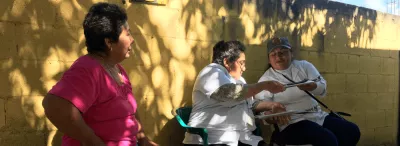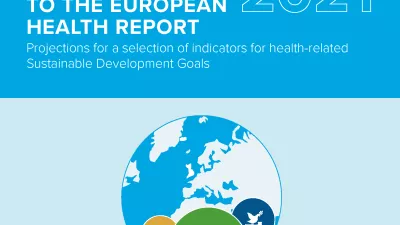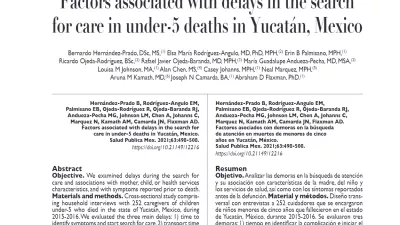Under-5 child health and mortality statistics in Yucatán, Mexico
In the state of Yucatán, Mexico, we reviewed cause of death records and the overall death certification process.The Under-5 child health and mortality statistics project was funded by the W.K. Kellogg Foundation through two grants spanning 2017–2018 and 2019–2021. The project was a collaboration between the Institute for Health Metrics and Evaluation (IHME) and Regional Research Center “Dr. Hideyo Noguchi” (CIR) at the Autonomous University of Yucatán (UADY). IHME is an independent population health research center at the University of Washington and led the evaluation components of the under-5 child health and mortality statistics project with expertise in primary data collection, technology solutions, and data analytics. The Regional Research Center “Dr. Hideyo Noguchi” (CIR), part of the Autonomous University of Yucatán (UADY) in Mérida, utilizes a multi-disciplinary approach blending medical and social sciences and a devotion to humanist principles to research issues related to health on a regional, national, and international scale. UADY provided clinical expertise in medicine and a deep understanding of the local context in Yucatán and Mexico, and led efforts to implement interventions and conduct local field work.

The primary objectives of the project included:
- Evaluate the quality of death certification in children under 5 in the state of Yucatán by comparing the cause of death recorded from death certificates with those from both medical records and from Verbal Autopsy interviews.
- Improve the quality of cause of death certification for deaths of children under the age of 5 through the implementation and evaluation of health facility interventions at Agustín O’Horán Hospital in Mérida.
- Develop a better understanding of the factors and delays related to the search for care process for children under the age of 5.
- Improve the knowledge and recognition of alarm signs and symptoms for principal causes of death and morbidity among mothers and primary caretakers of children under 5 in order to reduce delays in the search for care through the implementation and evaluation of community-based interventions.
Survey instruments and protocols
Relevant survey instruments, protocols, and trainings used during the Under-5 child health and mortality statistics in Yucatán, Mexico project can be found on the Global Health Data Exchange (GHDx). A variety of data collection methods, including a household survey, medical record review, and customized verbal autopsy tool were used to carry out the work. The available data include:
- Instruments and data from the baseline
- Instruments and data from the endline
- Instruments and data from the verbal autopsy and medical record review
Funding and partners
The Under-5 child health and mortality statistics in Yucatán, Mexico team collaborated with and harnessed the expertise of the Autonomous University of Yucatán (UADY) to carry out this work.
The cooperation of both the Secretary of Health of Yucatán, which administers local health systems in the region, and Hospital Agustín O’Horan in Mérida, the site of health facility interventions and data collection, were also critical to the success of the Under-5 child health and mortality statistics project.
Presentations
- Mortalidad y atención a la salud de menores de cinco años en Yucatán (Under-5 mortality and healthcare in Yucatán)
Presented virtually at a results dissemination workshop in January 2021
In the second phase of the project, we implemented and evaluated both community and facility-based interventions, aimed at improving recognition of alarm signs among mothers and caretakers for common causes of death in children and improving the quality of cause of death certification for deaths of children under 5.
- Calidad de información sobre mortalidad en menores de cinco años en Yucatán México 2015-2016 (Quality of under-5 mortality statistics in Yucatán, Mexico)
Presented at the 2019 Instituto Nacional de Salud Public Conference in Cuernavaca, Mexico in March 2019
We studied interviews with caretakers for all deaths of children under age 5 in Yucatán between 2015 and 2016, finding that overall the vital registration system for deaths of children under 5 is strong. However, concordance between vital registration systems and medical records varies based on cause of death and age of the deceased (neonatal vs. child).
- Calidad de información y mortalidad en menores de 5 años en Yucatán (Quality of information and under-5 mortality in Yucatán)
Presented at a results dissemination workshop in Mérida, Yucatán in October 2017
For the first phase of the project, we sought to strengthen the evidence and understanding of key factors related to under-5 mortality in Yucatán, Mexico using verbal autopsy data collection tools.


